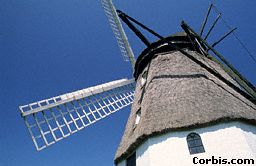| Group | Germanic (with German, English, Dutch etc.), North Germanic (with Swedish, Icelandic etc.) |
| Geography | Territory of modern Denmark, also spoken in the Skone region in southern Sweden and in Greenland. Formerly Danish was spread on the British Isles, and in Norway. |
| History | The Old Danish period lasted since the 9th to the 16th century. The first inscriptions in it were found on the Jutland peninsula. In the MiddleAges Danish was a language of Vikings who invaded Britain, Ireland, Northern Europe and colonized Scandinavia. After Denmark lost its colonies, the sphere of usage was limited to the territory of the kingdom. |
| Phonetics | The most significant feature is the Danish "push", similar to the German 'Knacklaut', a sharp laryngeal linking which happens after a vowel. This linking is very important not only phonetically but also morphologically. Another specific trait is the absence of long consonants which is not known in any other Scandinavian language. Danish has 20 vowels and 11 diphthongs, which can be both long and short. b, d, g are unvoiced consonants. |
| Nominal Morphology | 2 genders, 2 cases and 2 numbers make Danish a typical Scandinavian
tongue. The plural number is usually formed with -er or -e.
The indefinite article en, et precedes the noun, while the
definite one -n, -t, -ne follows it. Adjectives have strong
and weak forms.
Numerals in Danish are counted in 20s, so the word 'fifty' literally means 'two and a half times twenty'. |
| Verbal Morphology | Strong and weak verbs were preserved. A great lot of analytical constructions include eight tenses and the passive voice. The imperative mood is formed synthetically (skriv! 'write!'), the conjunctive mood is complex. |
| Lexicon | The Danish language struggles for the purity of its lexicon, so the basic vocabulary remains original. There are some loanwords from Low German and High German languages. |
| Writing | Runic alphabets (since the 9th till the 12th century), Latin alphabet |
| Close Contacts | In the early medieval times Latin influenced the language greatly, especially the lexicon. Later, during the Hansa period, Danish aristocracy and even kings preferred to speak Low German instead of Danish, and this also caused numerous loanwords and grammar borrowings. |
| Sample | KurmR konukR kari kubl usi aft urui kunu
sina tanmarkaR but.
Gorm the king built this rock in honour of his wife Thura, the saver of Denmark. (Stone from Jelling, the 10th cent.) |
| Picture |  |
| More info |